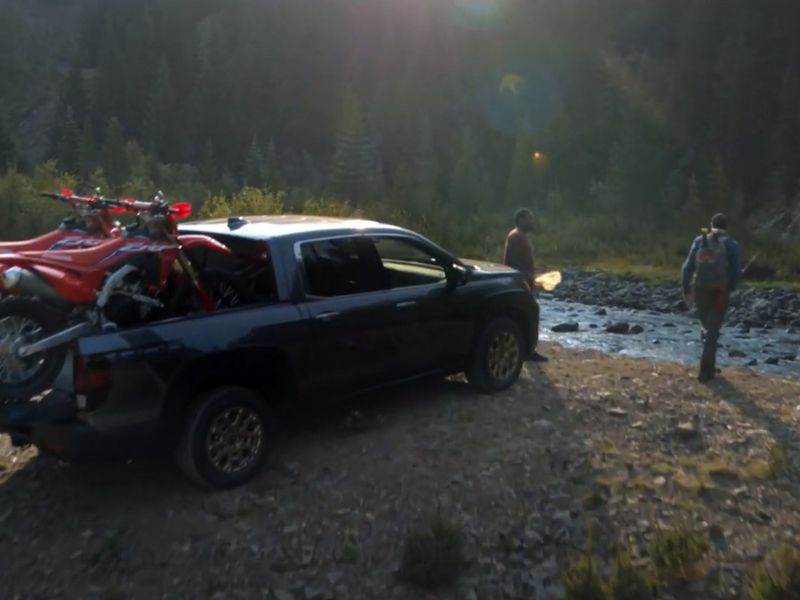
American Honda is leaving the “Wonder Years” for the wrestling ring. WWE star and actor John Cena is replacing Fred Savage as the new voice of the brand in a major marketing pivot aimed at giving its ads a more rugged tone.
The switch — which begins Friday with a new ad from longtime Honda agency RPA — comes as the automaker tries to boost its crossover and pickup truck sales. Trucks, vans and SUVs will account for 76 percent of U.S. auto sales this year, according to consultancy AlixPartners. But Honda’s sales are still about 50 percent cars and 50 percent trucks and SUVs/crossovers, according to Ed Beadle, Honda’s assistant vice president for integrated marketing.
“We would like to keep those sedan buyers but grow that proportion of SUVs,” he says.
Click here for Honda’s Future Product pipeline from Automotive News.
Savage, forever linked to the TV show “Wonder Years” that ended its run in 1993, had been voicing Honda’s ads since 2014. He was seen as an unconventional pick with a boyish persona and higher-pitched voice that stood out in an industry that often deploys more grizzled, leading men types for voice-overs. Ford uses Bryan Cranston, for instance, while Mercedes-Benz has Jon Hamm.
But Savage fit the off-beat tone Honda had used for years with ads that often veered away from the sheet-metal-heavy approach of other auto marketing. In 2016, for instance, Honda ran a Super Bowl ad featuring a flock of sheep singing Queen’s “Somebody to Love,” followed by a spot plugging its Ridgeline truck with stop-motion art.
Its 2017 Big Game ad for the CR-V featured younger versions of nine A-list celebrities springing from the pages of their high-school yearbooks.
The new ad takes pains to portray Honda in a more masculine light, with a heavy emphasis on demonstrating the mud-splattering off-road capability of the 2021 Passport and Pilot crossovers and the redesigned Ridgeline pickup. “Don’t let the attention to detail lead you to believe that a Honda is a delicate machine,” Cena says in the ad, before exhaling, “you’d be wrong.”
“We are definitely going more product-focused now,” Beadle says. “The schtick is probably not going to be a recurring thing,” he adds, referring to the old creative approach.
As for the voice-over switch, “Fred was great but Fred reflected a key word — and that key word was nice,” he says. The brand wanted a “sound that had more gravitas to it and more room to grow, and if you look at John Cena’s work, that guy does such a breadth of work, from family films to the tough guy image … he’s a car guy,” he adds, alluding to his role in the next installment of the “Fast & Furious” film franchise.
Honda did not release financial terms of its deal with Cena. It covers voiceover work only, but Beadle says the brand will “leave open the door to possibilities.” He will voice all Honda ads, including for its passenger cars.
Honda is even toughening up the mnemonic that begins its ads. For years it had used a two-beat doorbell sound matching the two-syllable Honda name. The new ad starts with the thump-thump of a drum. “It just starts it off with a rough-and-tough feel,” Beadle says.
Ruggedness race
With the changes, Honda risks blending in with other car ads and losing a bit of its family-friendly charm. Honda has long been associated with the “suburban lifestyle” and “known for its innovations in engines, high quality, low cost of ownership and an extremely loyal customer base,” says Maryann Keller, an auto analyst and principal at Maryann Keller & Associates LLC.
But “American consumers have moved away from standard sedans, tipping the market toward pickup trucks and SUVs where Honda lacks in the most profitable segment, which are also their most rugged models,” she says. “Honda has to demonstrate that its SUVs can go off road, carry lots of passengers and camping gear.”
“There seems to be something of a performance/ruggedness race more relevant to today’s consumer, just as quality, lower cost to ownership consumer demands [were key] in the 1980s, 90s and 2000s,” Keller adds.
Beadle says Honda is not veering from its brand DNA. He points to Cena’s reputation as a down-to-earth celeb as a trait that fits nicely with Honda’s ethos. The actor is very active with the Make-A-Wish nonprofit. He is also a gamer, which aligns with Honda’s emphasis on esports marketing.
Honda is also trying to differentiate itself by spotlighting its range of products. The campaign includes shots of Honda motorcycles, dirtbikes, its Talon all-terrain vehicle and a Honda-branded generator — products not all of its competitors offer.
“We are authentic in that space, our motorcycles are loved,” Beadle says.
Sales challenge
American Honda’s overall U.S. sales, including Acura, fell 9.5 percent in the third quarter to 388,433 vehicles. Honda’s year-to-date deliveries fell 19 percent to 980,720.
Of course, Honda’s future prospects will depend on raising its game in the pickup truck and crossover market, including for the Rideline. Honda recorded 23,112 sales of the mid-size pickup through the year’s first three quarters, down 2.2 percent compared with the same period last year, according to Automotive News. The 2021 redesign includes styling meant to give it a tougher look.
“The midsize truck market in which Ridgeline competes is hot, hot, hot, right now,” Autotrader analyst Michelle Krebs stated in an email interview. “In contrast to owners of full-size pickups who use their trucks largely for work activities, owners use their midsize trucks for outdoor recreational activities so going more rugged makes sense.”
But she added that Ridgeline “has been a niche player in the midsize truck market, which is dominated by Toyota Tacoma. Meantime, Honda relies heavily, maybe too heavily, on just three models — Accord, Civic and CR-V — for the bulk of its sales. Spreading the risk to more vehicles and those with more profit margin like Ridgeline is a smart thing to do.”